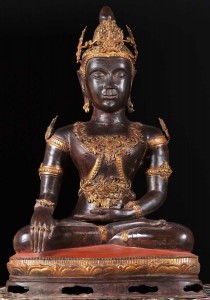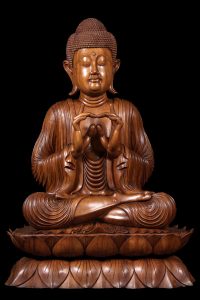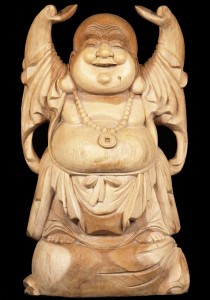As with all the major religions, Buddhism provides some basic principles to follow in ones everyday living. These principles need not solely apply to practicing Buddhists, but can be beneficial for every living being to keep in mind as they interact with the world. After enlightenment, the Buddha, Siddhartha Gautama, wrote out some basic rules to be followed in daily practice which he called “The Five Precepts”. The five precepts are as follows:
1) No Killing- One must always have a divine respect for every living being. Life in all its forms is something to be cherished and respected. As the Buddha said:
“Life is dear to all beings. They have the right to live the same way as we do.”
This even applies to those pesky mosquitoes that may spoil our outdoor activities. Even the smallest being has a right to life.
2) No Stealing- One must live their live with superior integrity with respect for every living beings property. We would not want others to steal from us, so following the same principle we should not take from others what is not our own.
3) No Sexual Misconduct- We must try to live with a pure intentioned nature, valuing our bodies and those of others with the utmost care and respect. Our bodies are our temples and a gift from our ancestors. Virtue is something to be cherished.
4) No lying- We must always speak with right speech, as the noble eightfold truths hold. This means speaking with honesty without blemishing the truth. The Buddha believed if we all spoke only the honest truth, the world would be much more peaceful. This even applies to correcting others when a misunderstanding may occur.
5) No Intoxicants- The Buddha held dearly living a life of pure mind, body, and soul. Subjecting oneself to intoxicants would obviously taint both our minds and bodies, therefore we must try not to put anything into our bodies that may hinder us.

For practicing Buddhists, following the precepts to the tee can sometimes be a difficult task. We must learn to put our best intentions forward and give them our best effort. The precepts are not supposed to be easy, but challenge us in our paths to enlightenment. For many this is a lifelong struggle, and learning experience. The purpose of the precepts is not to enforce perfect behavior, but to learn from our mistakes and put forth our best effort to follow his teachings. In doing so, we can grow ever closer to our most awakened selves.




